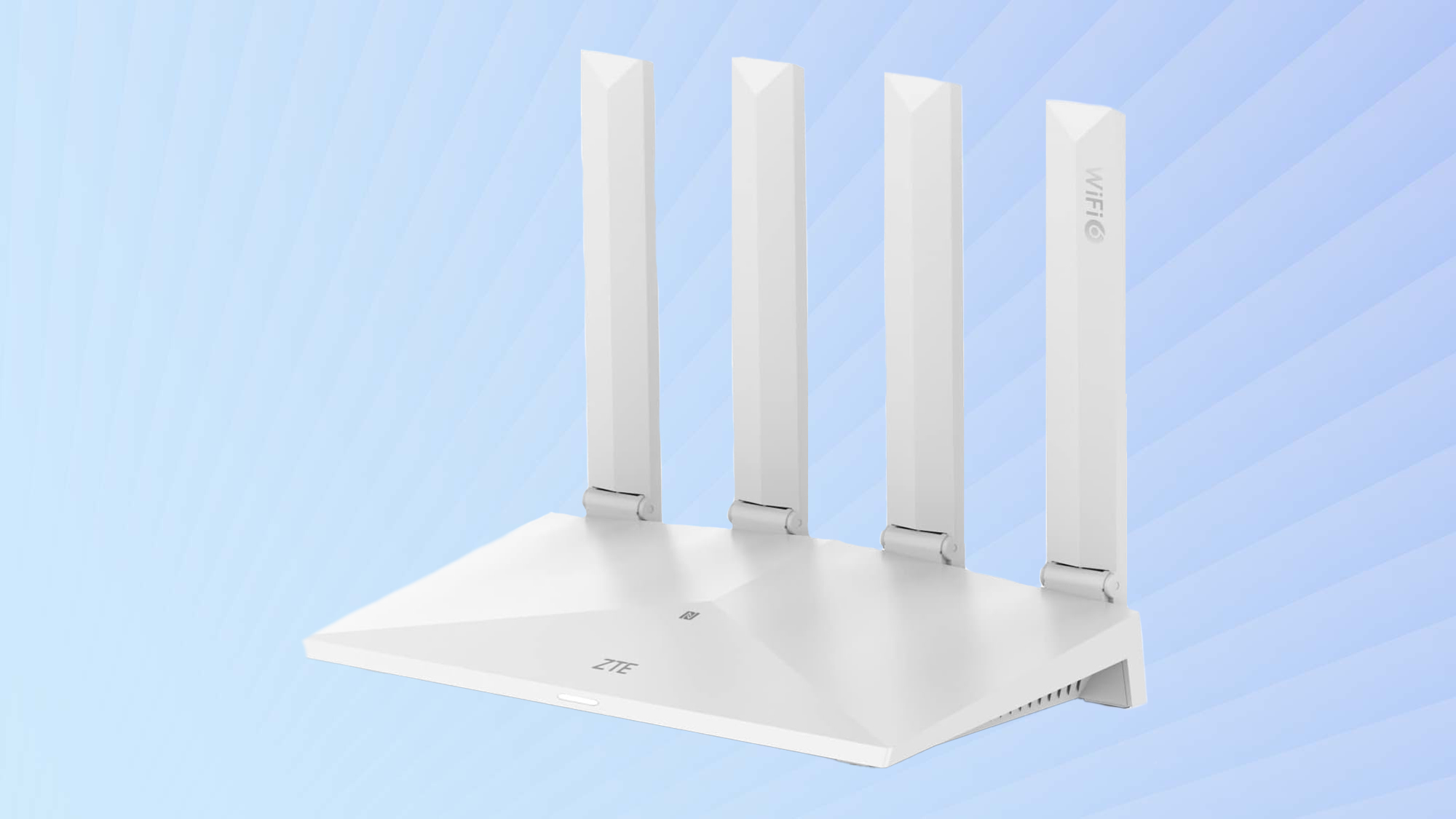
Wi-Fi Spec: AX3000
Antennas (removable): 4/No
Ports: 2 WAN/2 LAN gigabit per second
Processor/Memory/Storage: 1GHz dual-core CPU/512MB/256MB
Wi-Fi chip: Qualcomm IPQ5018
Peak 802.11AX Performance: 1.061Gbps (at 15 feet)
Range: 85 feet
Size: 9.4 x 5.4 x 1.5 inches
Est. Annual Electricity Cost: $11.50
Can a $99 Wi-Fi 6 router compete with networking devices that cost several times more? That’s the idea behind ZTE’s Miracle AX3000 Pro router, better known as the T3000. This dual-band router can team two broadband inputs, instantly connect with the tap of a phone and performs exceptionally well close up. The T3000, however, let me down at mid-range distances of 50 or more feet and lacks both a USB port and any extra security software.
Our ZTE Miracle AX3000 Pro review will help you decide if this is one of the best Wi-Fi routers on a tight budget and whether or not it can fill your home with Wi-Fi at an unbeatable price.
ZTE T3000 review: Costs and what’s covered
The ZTE Miracle AX3000 Pro router (aka T3000), is one of the best bargains in the Wi-Fi world. Not quite a miracle, it is rated to cover 1,500 square feet and has a list price of $100 but can be had for as little as $65 if you shop around online. That’s about half the price of the $150 Reyee RG-E5 budget router and a pittance compared to the $250 TP-Link Archer AX6000.
ZTE T3000 review: Design
Dressed in either black or white plastic, the ZTE T3000 Pro measures 9.4 x 5.4 x 1.5 inches, about one-third smaller than the Reyee RG-E5 router and positively tiny compared to the likes of the Linksys Max-Stream MR9600 or TP-Link Archer AX6000. Unfolding the router’s four antennas adds 6.1-inches to the T3000’s height but they can’t be rotated to catch the strongest signal.
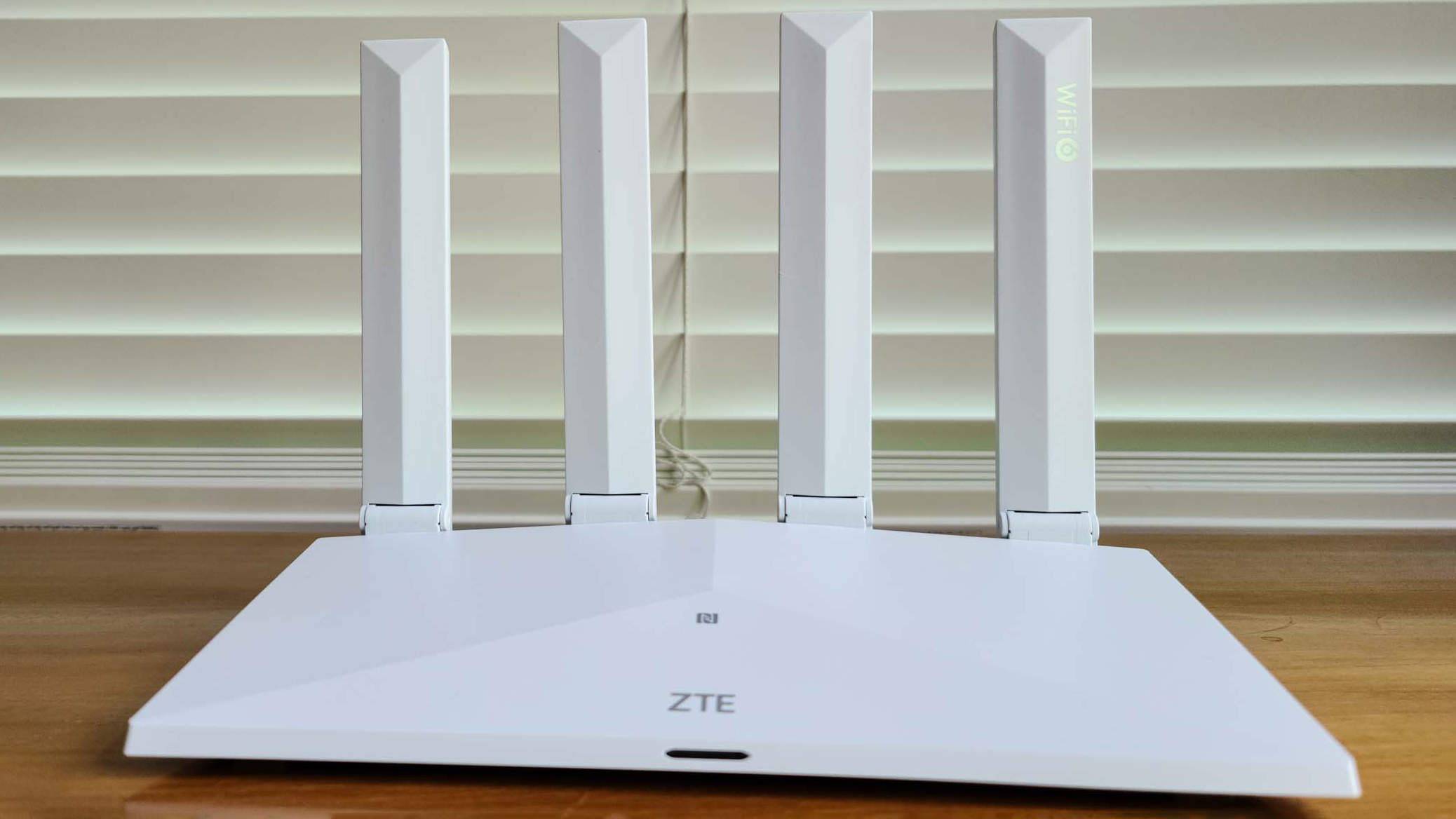
Underneath, the router has soft rubber pads, but only for its back two feet, and lacks a way to hang it from a wall or under a table. At just over a pound, it can be held in place with Velcro tape.
The T3000’s wedge shape has a slight geometric peak on top but goes against the major design trend of the day without any visible cooling vents. Passively cooled with grilles underneath and on the sides hidden by an overhang. it got warm to the touch but never above 98 degrees Fahrenheit.
On its top, the T3000 has something few routers have: an NFC connection point for making a quick Wi-Fi link to a phone. With the ZTELink app loaded on my Samsung Galaxy S20 phone, all I had to do was tap the NFC spot. It asked if I wanted to connect and like magic, I was online in less than 10 seconds. It’s perfect for those of us who spend the day on a variety of different Wi-Fi networks but it doesn’t work with iPhones.
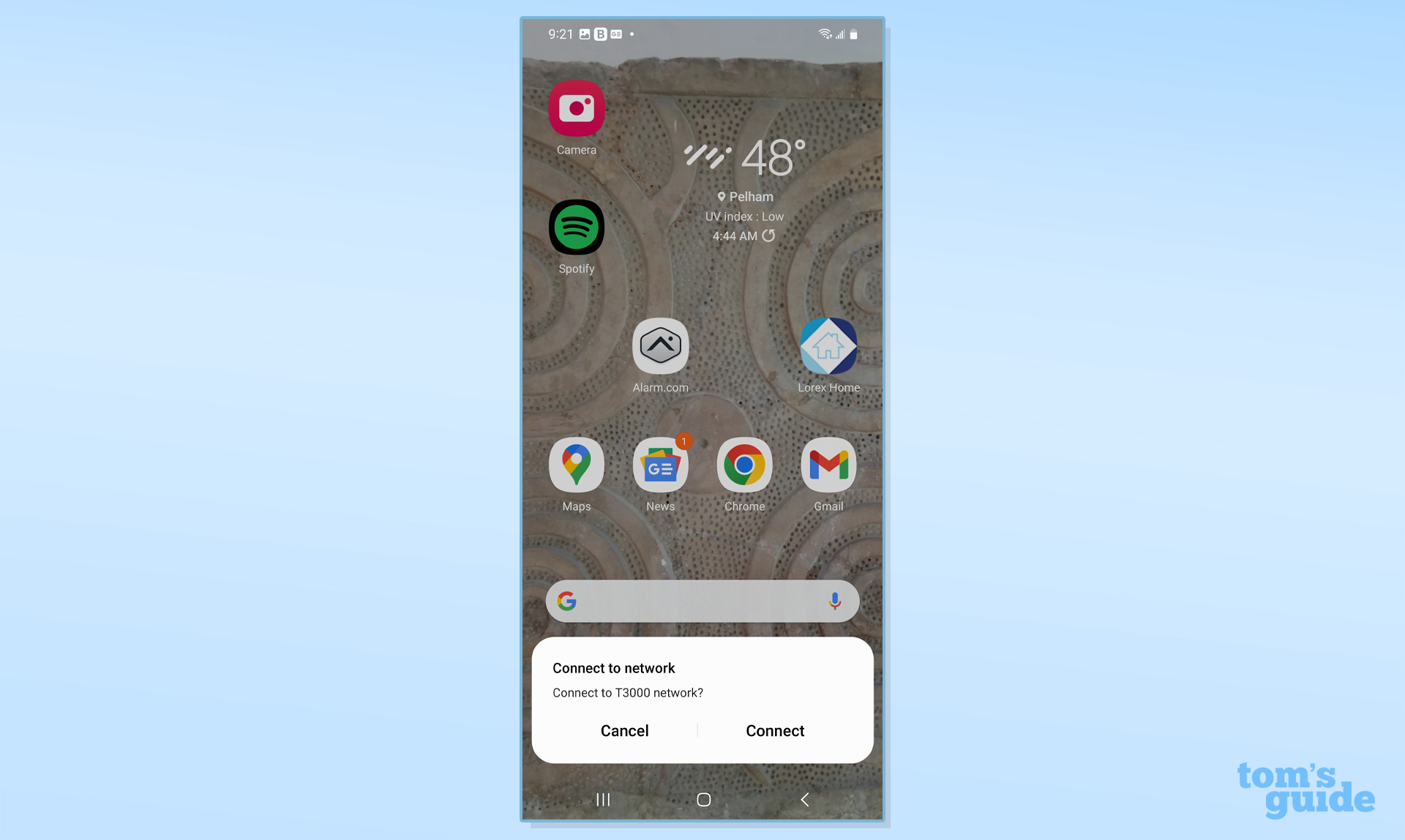
The T3000’s port selection has surprises, good and bad. Instead of the expected one incoming and four outgoing LAN ports, the T3000 has a pair of 1Gbps inputs that can be aggregated for faster connections, that is if you have two broadband connections available. On the other hand, the router lacks any multi-gig WAN inputs. Its pair of wired LAN outputs should be fine for most, although heavy-duty users will likely need to add a networking switch for linking anything more than a networked drive and printer. There’s no USB port for adding a drive or printer.
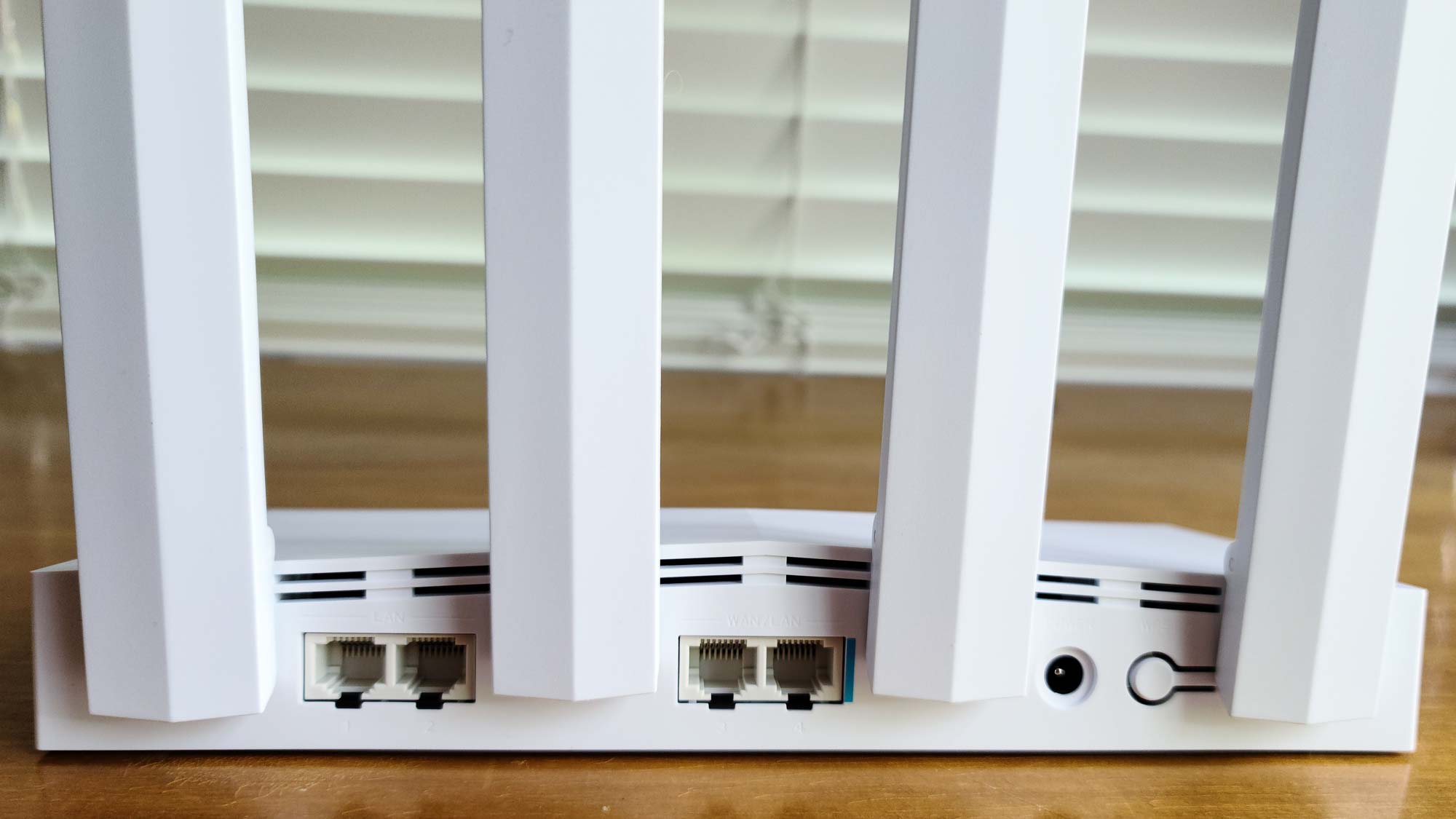
Its three transmission modes — Standard, Short-Range and Wall-Through — are easy to change in the app and the T3000 has a recessed reset key underneath along with a Wi-Fi Protected Setup (WPS) button in the back. The T3000 does without an On/Off switch though its single LED upfront is a welcome change from the Christmas tree lights of others; plus, it can be turned off.
On the other hand, the T3000 lacks the Reyee RG-E5’s single button for setting up a mesh network, but turning the router into a mesh host or node can be done through the router’s app. It does without any extra security software, like that offered by TP-Link and Netgear, but there’s nothing extra to buy. When Netgear Armor’s trial period expires, it can cost $100 a year for security updates.
ZTE T3000 review: Performance
Inside, the T3000 is powered by Qualcomm’s IPQ5018 Wi-Fi chipset that creates networks on the 2.4 and 5GHz Wi-Fi bands; it can’t operate on the 6GHz band, however. With a dual-core 1GHz processor, the T3000 has 256MB of flash storage for its settings and firmware and 512MB of RAM to accommodate up to 128 users on each band.
Based on the Wi-Fi 6 protocol, it has the latest tweaks, like MUMIMO, OFDMA and 160MHz data channels. It’s capable of moving up to 574Mbps over the 2.4GHz band and 2.404Gbps over the 5GHz band. Its total theoretical throughput is 2.97Gbps, putting it slightly behind the Reye RG-E5’s AX3200 rating.
Using Ixia’s ixChariot network simulation software in my 100-year-old house, I set the software up to mimic 10 data-hungry users. At 15 feet, the T3000’s top speed of 1.061Gbps was achieved using the Wall-Through mode. That’s nearly 20% better than the TP-Link Archer AX6000’s 884.4Mbps and the Reyee RG-E5’s 849.2Mbps. The T3000’s Standard mode yielded 25% less throughput.
Impressive for such an inexpensive router, it can’t compete in raw performance with the likes of Nertgear Nighthawk AX8’s 1.38Gbps. While the T3000 sells for under $100, the Nighthawk AX8 costs $400.
Like other routers, the T3000’s speed fell off quickly at 50 feet. In this instance, it had a throughput of just 212.8Mbps using the router’s Standard mode. That’s a little over half the bandwidth that the Archer AX6000 delivered at the same distance. At 75-feet the dichotomy became even greater with the T3000 moving just 60.8Mbps versus 298.0Mbps for the RG-E5 and 149.9Mbps for the Archer AX6000.
As was the case with the Archer AX6000, the T3000 was offline at 85-feet. By contrast, the RG-E5 was able to move 45.8Mbps at 90 feet.
When I set up the receiving system in another room, 20 feet from the router for the wall penetration test, it delivered a healthy 821.8Mbps. That’s just short of the RG-E5’s 857.8Mbps and better than the Archer AX6000’s 738.0Mbps. The T3000 did passably well on the final test where I set the test system up in a bedroom above the router. It was able to move 495.9Mbps, better than the RG-E5’s pittance of 47.0Mbps, although well behind the Archer AX6000’s 667.3Mbps.
The T3000 passed the informal saturation test with the router feeding Spotify music to an iPad Pro and the BBC WorldService news feed on a ThinkPad T470 while playing YouTube movies on a MacBook air and moving data onto and off a networked RAID storage system with an HP Elite Dragonfly notebook. All the audio and video came through without any freeze-ups or problems.
Even when it was blasting bits back and forth in my house, the T3000 never got warmer than 98 degrees Fahrenheit and used only 7.2 watts of power. If it’s left on 24/7 and you pay the national average of 15 cents per kilowatt hour of electricity, it should cost about $11.50 a year to use. That’s significantly less than many of its competitors.
ZTE T3000 review: Setup
Getting the T3000 connected and online starts with downloading and installing the ZTELink app or using the connected browser approach. Happily, the T3000 doesn’t require an account with the manufacturer to configure it. After plugging everything in and waiting for the device’s LED to go from blinking red to white, I set my ThinkPad T470 to the router’s default network name and entered the password that’s printed under the router.
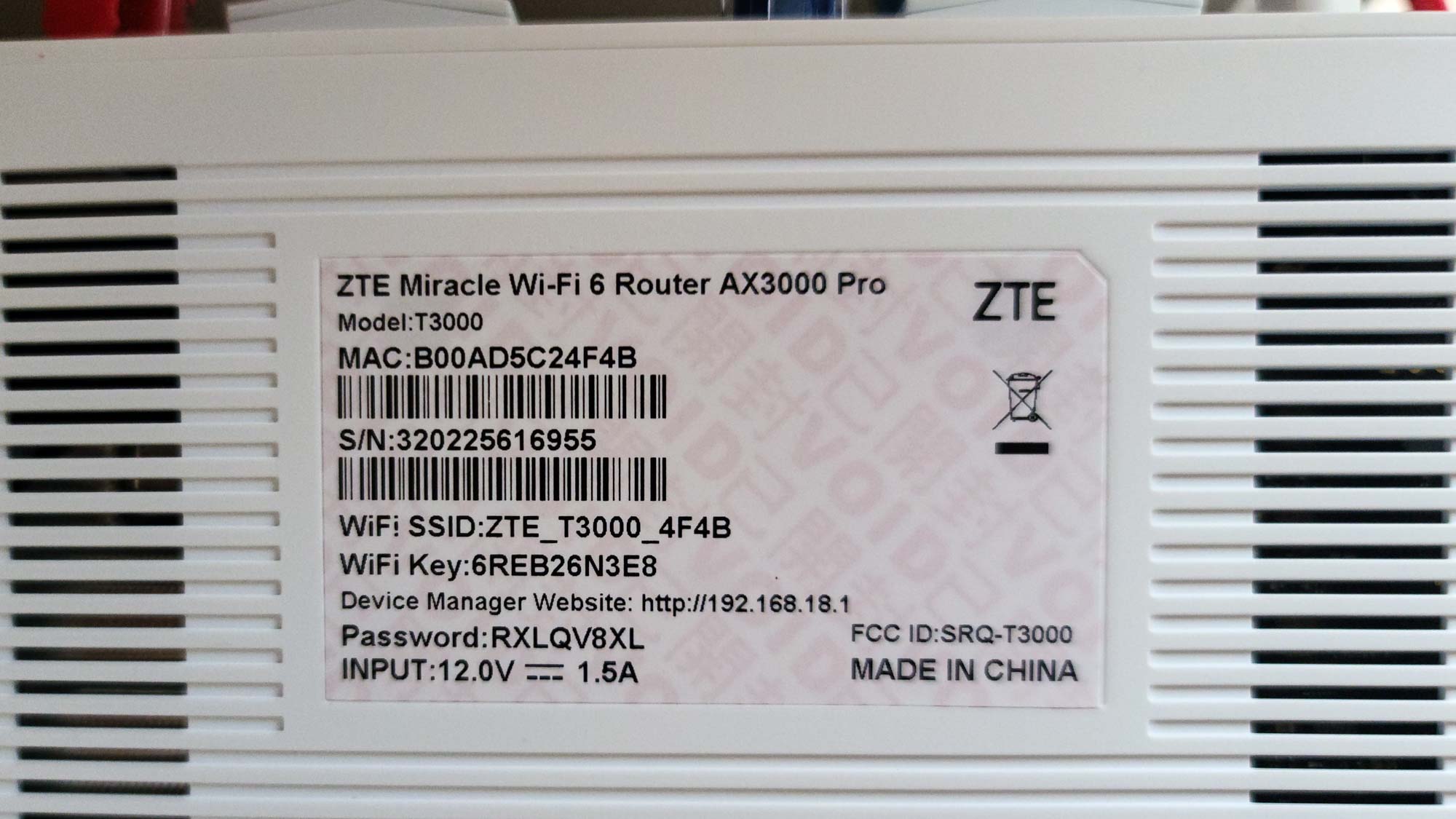
Using the T470, I went through a three step setup process that started with picking the type of Internet connection I have. The choices are PPOE, Dynamic IP and static IP address.
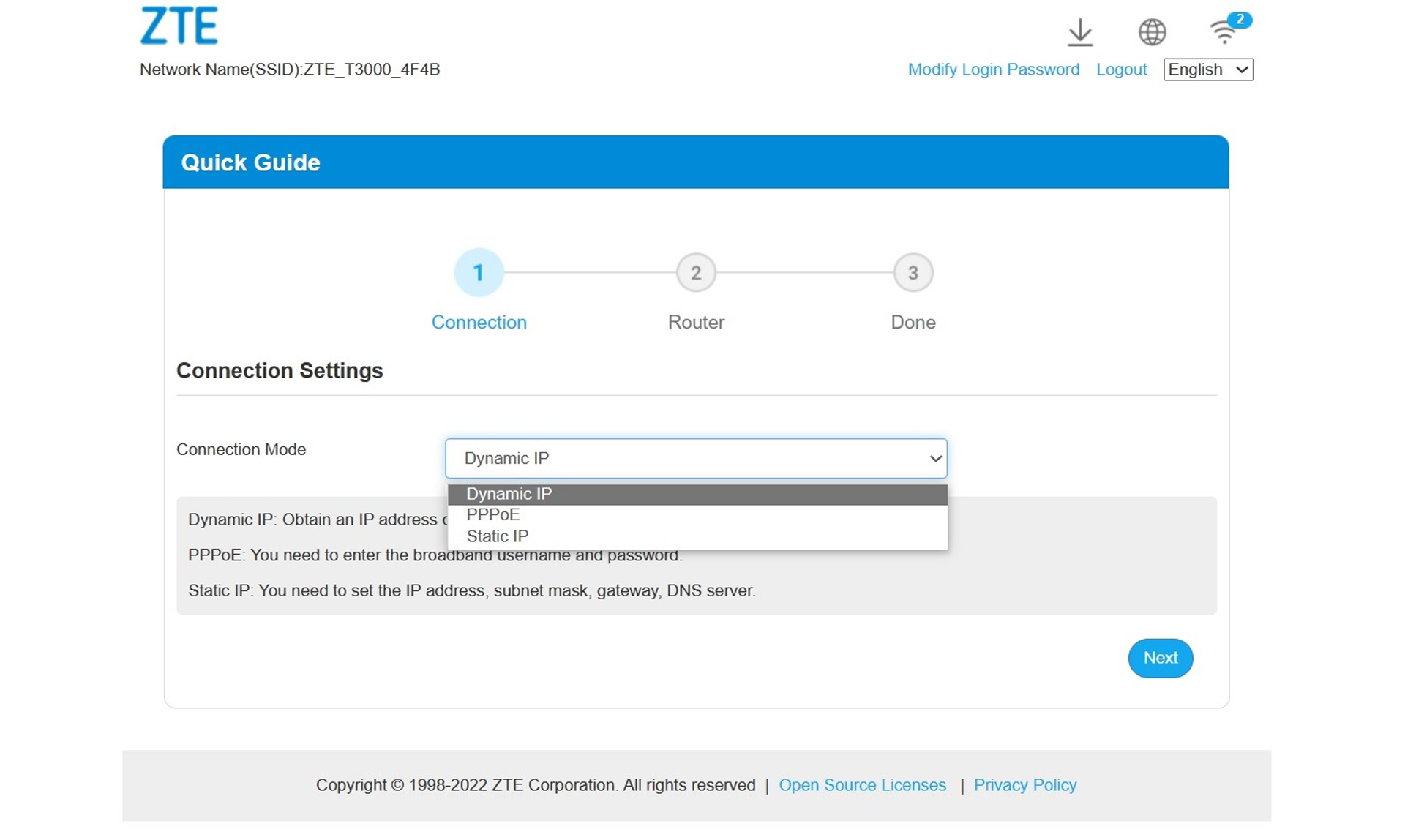
Then, I entered a login password, new network name and its password. I enabled the NFC instant connection option at the bottom. Finally, I was done. The app offered a QR code to connect and start to finish, it took 5 minutes.
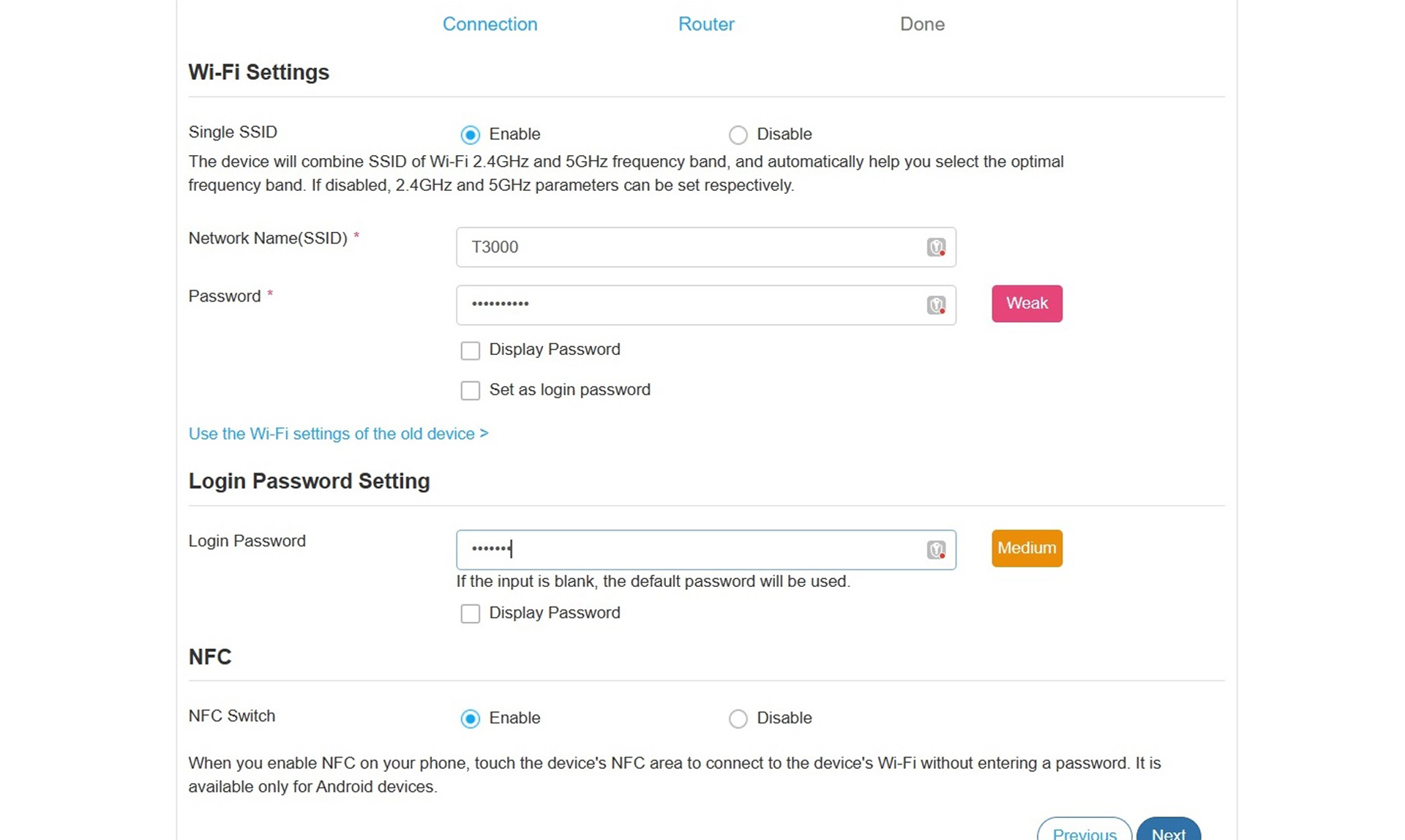
ZTE T3000 review: Configuration
As is the case with the installation, the ZTE T3000 offers the choice of using its ZTELink app or a connected browser. For the app, the main screen shows how many clients are online and whether it is using a traditional router approach or a mesh topology.
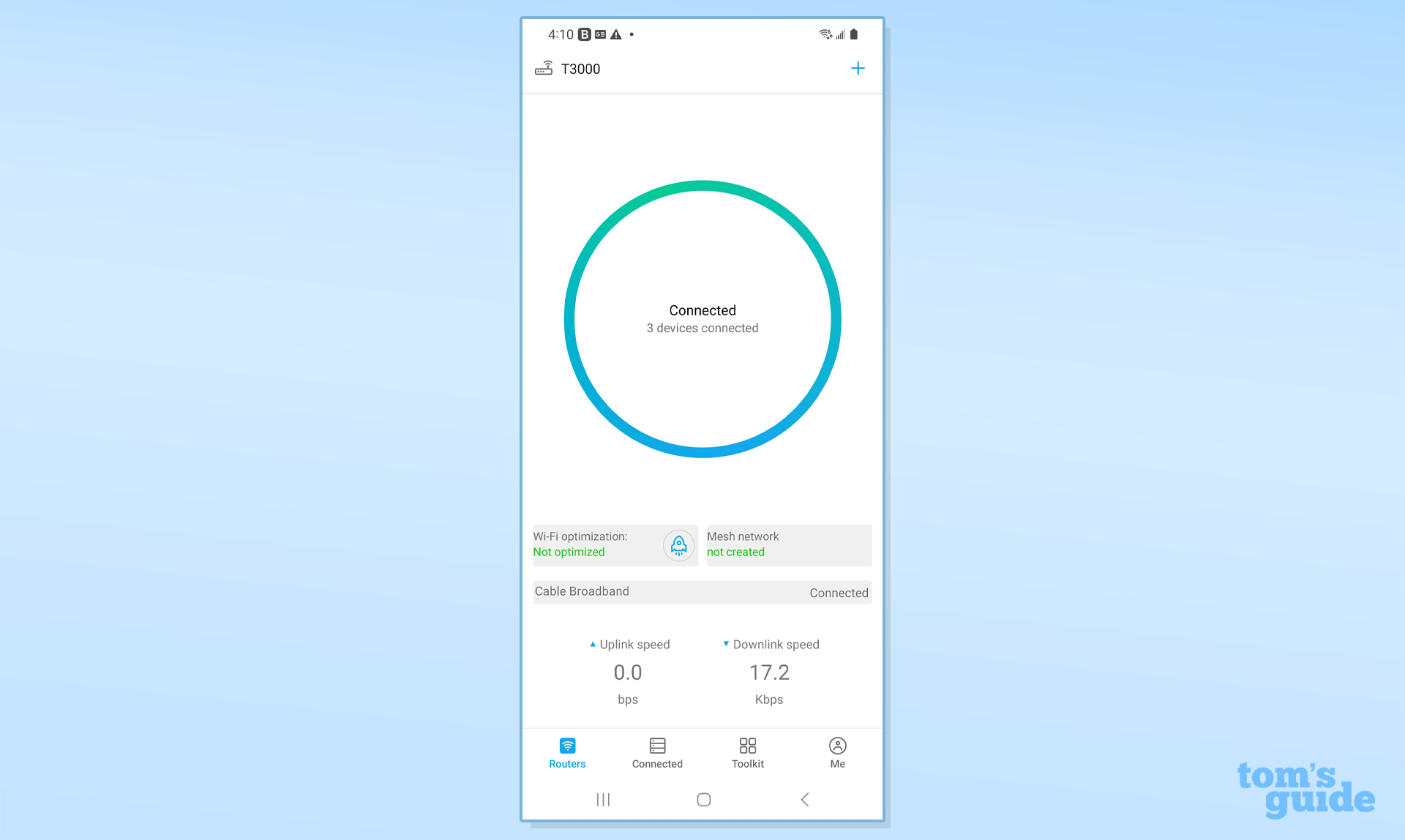
Tap the rocket ship logo to run an optimization routine that took about 15 seconds to check the router’s online link, look for open channels and make the changes. Below, a speedtest check of bandwidth is available.
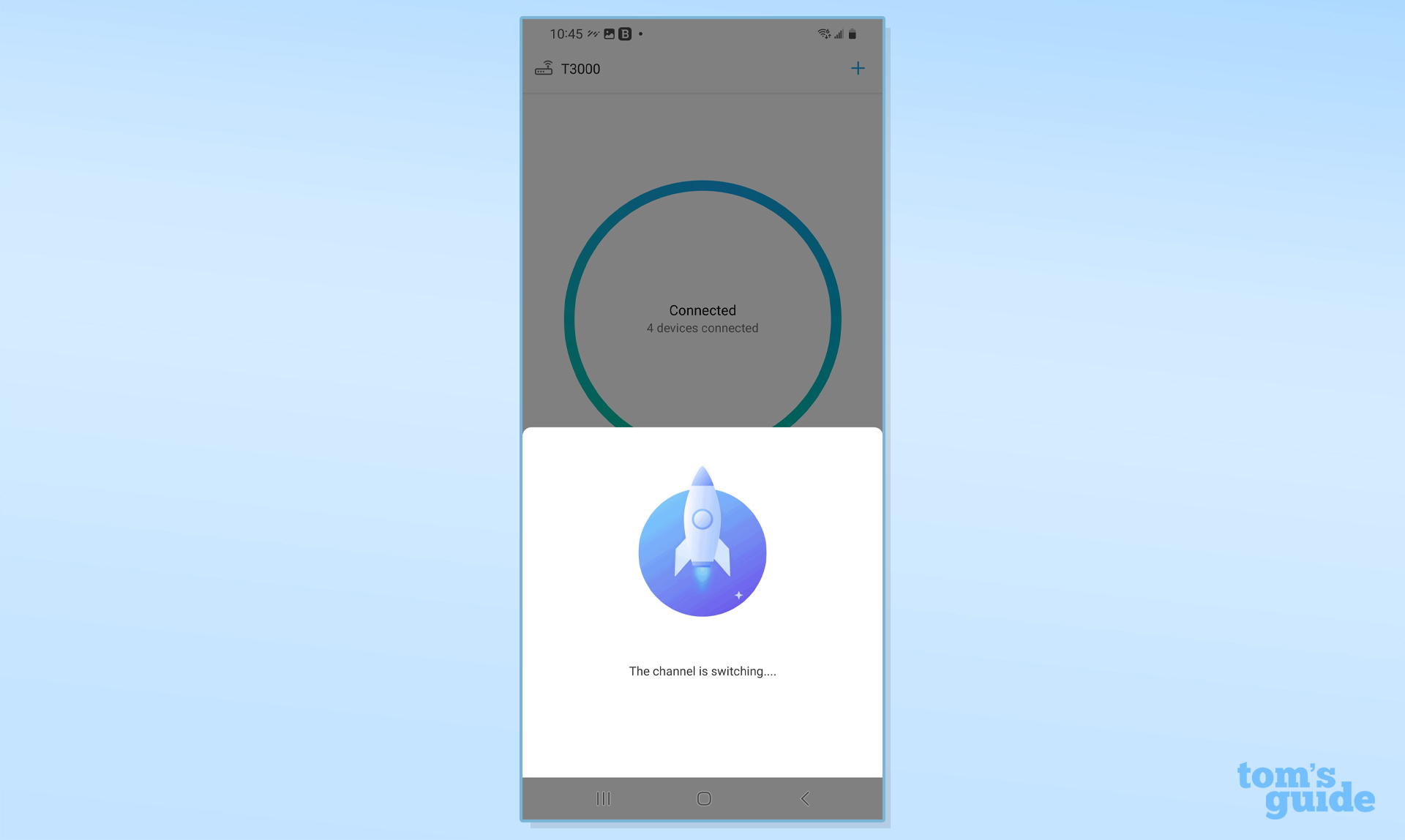
The tabs across the bottom are the router’s main functions, including what devices are connected to the router. There’s also a Toolkit with lots of options, like setting up a guest LAN and scheduling the router to restart so you can wake up to a fresh network every morning.
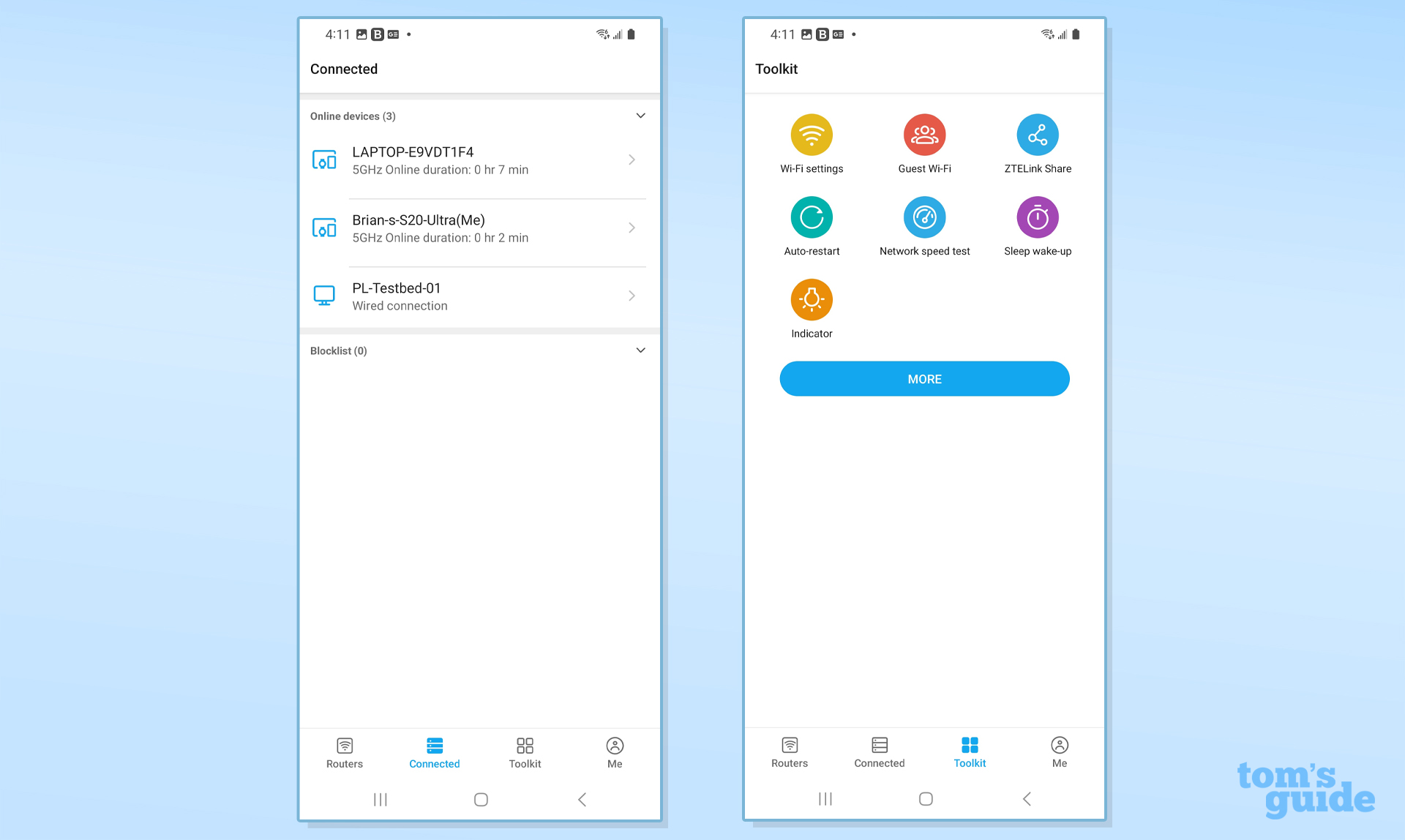
Tap the More section to get extra customization options. The most important include setting the router for Short-Range, Standard or Wall-Through modes. The Me tab has a link to open the browser-based configuration scheme on the phone or tablet.
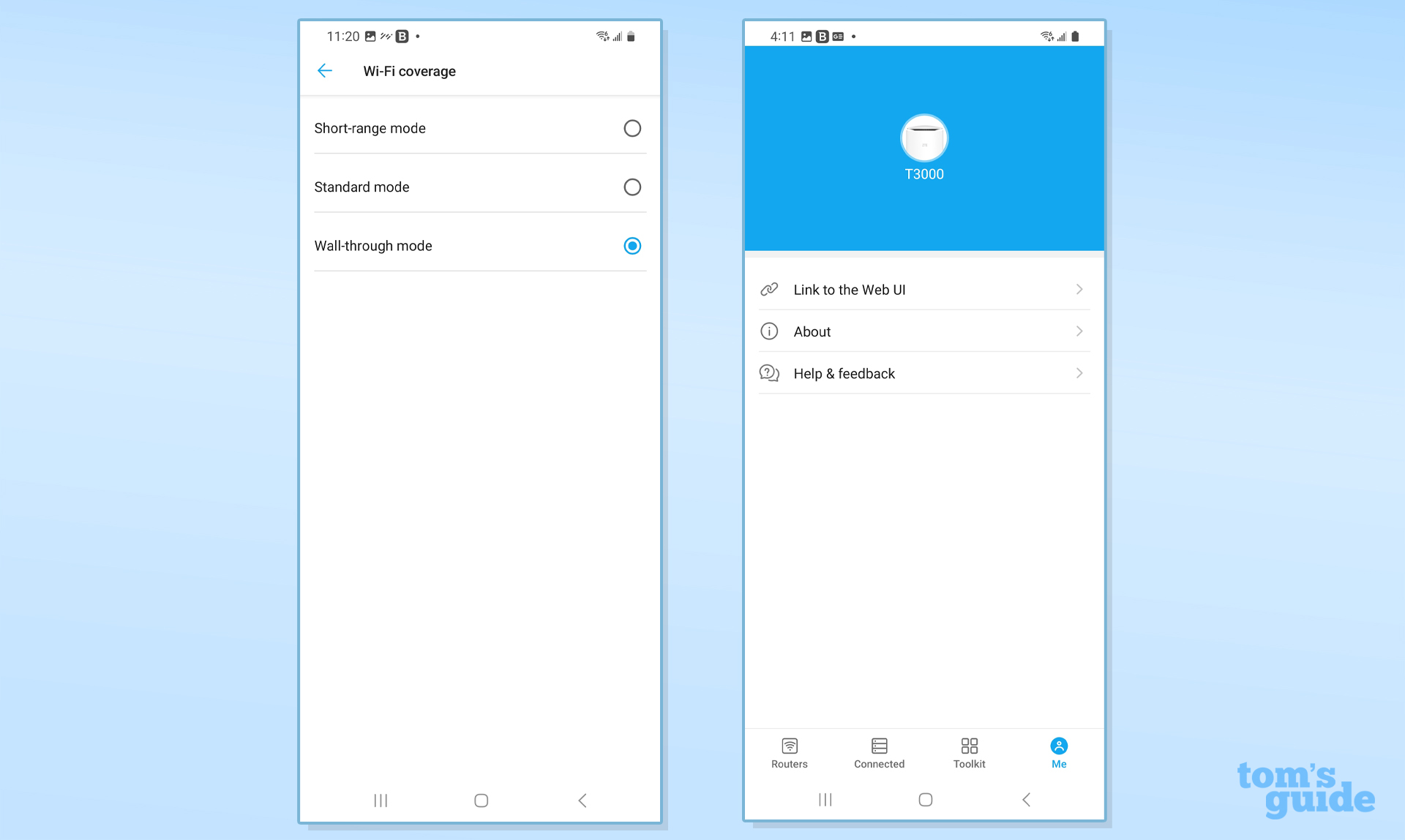
Speaking of using the connected browser approach, it yields a lot of flexibility in setting up the T3000 router. The main screen not only shows the network topology and the last speed rating but allows changes to the Internet connection. It has QR codes for connecting or getting the router’s app.

Below are places to turn the NFC connection option on or off, the mesh settings and Advanced selections. The latter has a Night mode that turns off the LED as well as the ability to put the router into a sleep mode. I was able to change the basics, like name and password along with adjusting the largest amounts of data the router can send by changing the MTU (Maximum Transmission Unit) and MSS (Maximum Segment Size) settings.
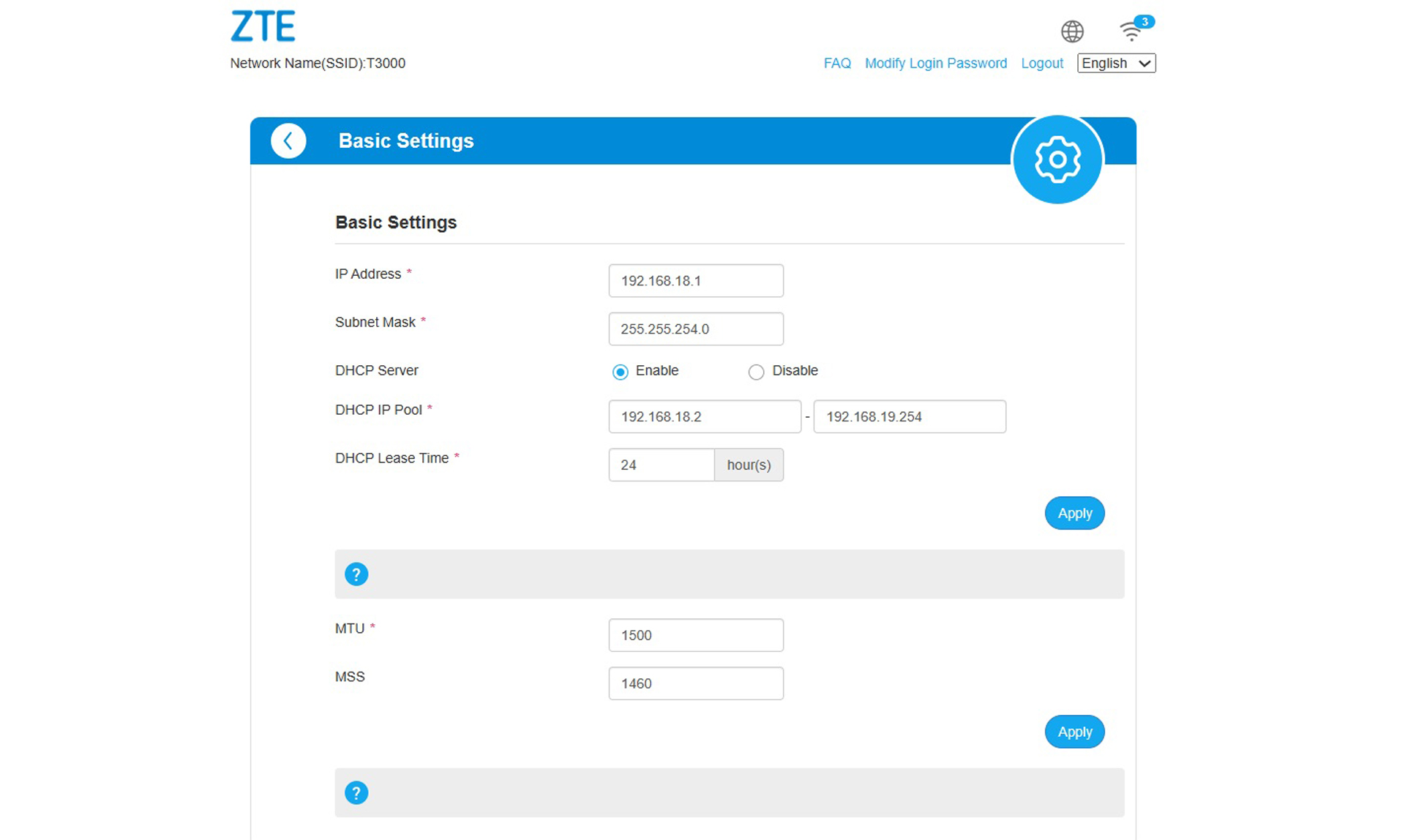
While I hoped that the gear icon in the upper right might lead to yet more configuration options, it returned me to the main screen.
The ZTE T3000 comes with a one-year warranty with unlimited support that pales next to the two years of coverage that Reye includes with its RG-E5 router. Still, it’s better than Netgear’s basic coverage that comes with only 90 days of support.

ZTE’s support comes up short, however, with no support site dedicated to the router. The company has a toll-free phone number and email address for problems and the browser has a FAQ section for basic problems.
ZTE T3000 review: Verdict
While ZTE is well known for its mobile phones and server gear, it’s new to the world of Wi-Fi routers. The Miracle AX3000 Pro (aka, T3000) is mesh capable and was a qualified success that did much better close up than at mid-range and long distances. Its unusual combination of an NFC instant connect area for linking with a phone and input port aggregation are balanced by it having only two downstream wired LAN ports, the lack of a USB port and any extra security software to protect the router and its network.
The miraculous part is its $ 99 price tag, but the T3000 is a bargain with baggage. It will likely be a boon for those who live in a small house or apartment because of its class-leading short-range capabilities. For those with larger homes and more space to fill with Wi-Fi, the T3000’s price tag opens the possibility of setting up several T3000s in a mesh network for less than the cost of the typical mesh Wi-Fi system.







